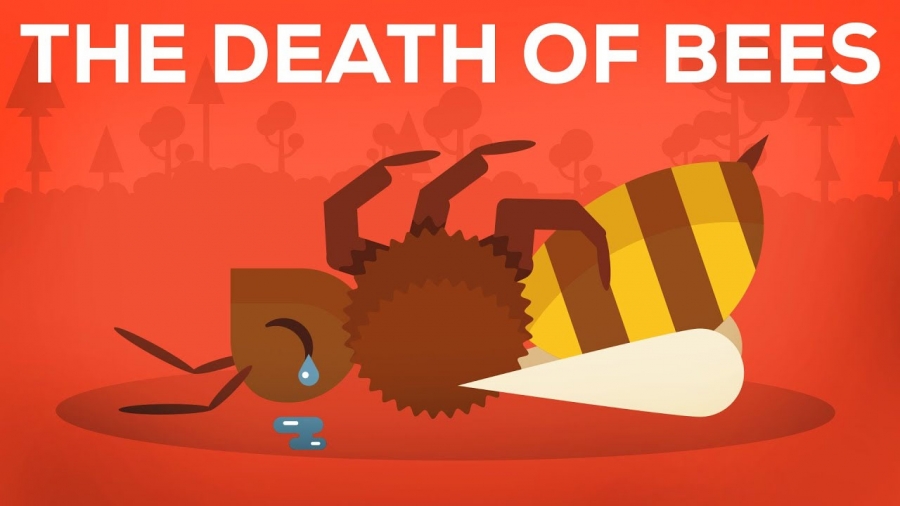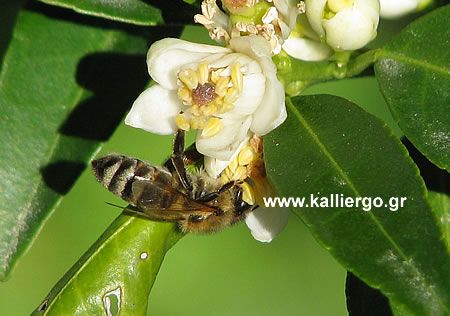Human society is extremely complex and fragile, resting on several pillars. One of them is that of the bee.
1 out of every 3 meals that humans enjoy, they owe to bees.
Bees are so important that if they all died, thousands of plants would follow, resulting in millions of people starving in the years to come.
Beyond that, bees have a huge positive contribution to the economy.
The value of the plants pollinated by bees each year is $265 million.
The food we take for granted simply would not exist without bees, or there would be a huge reduction in productivity.
Foods that include apples, onions, pumpkins, and plants that are used as animal feed and thus very important to the meat and milk we consume.
The expression “If the bees are lost, the people will follow after a few years” is wrongly attributed to Einstein.
But there is truth in this remark.
It’s alarming, but the bee population is declining
Millions of hives have been lost in recent years.
Beekeepers around the world have seen their bee populations decline by 30% to 90%.
Only in the U.S. bees are gradually disappearing.
From 5 million hives in 1988 to 2.5 million in 2015. A 50% decline.
Since 2006, a phenomenon called “Colony Collapse Disorder” has been observed and has affected hives in many countries.
And we’re not entirely sure what’s causing it.
All we know is that it’s very serious.
In recent decades, bees have been confronted with new and very dangerous enemies.
Pests
Pests that seem to have come from horror movies
Like the Acarapis Woodi mite that causes Tracheal Acariasis in honeybees by attacking the trachea (respiratory tract).
They lay their eggs in the tracheae and feed on the fluids of their victims, exhausting them and living a life inside them.
Such as one of the bee’s biggest enemies, the Varroa jacobsoni mite (Varroa jacobsoni), which can only reproduce in hives.
The female Varroa mite enters a cell where brood is developing and lays her eggs on the worm that will become a bee and before the nurse bees seal the cell.
The mite’s eggs hatch and they and their mother feed on the live developing brood of the bee within the safety of the sealed cell.
At this stage the bee does not die. It just slims down. So it has enough strength to unseal the cell and get out of it.
But as it emerges from its cell, it releases the mother and mites throughout the hive. These spread throughout the hive.
And so the process of Varroa infection starts again in 10-day cycles.
In a few months, the Varroa infestation in a hive has reached exponential proportions.
At this stage, the whole hive collapses and the bees are lost.
The adult intact Varroa, while on the adult bee, continue to feed on its juices making them weak.
To make matters even worse, they transmit viruses that affect the bees even more and can lead to genetic problems such as short wings.
But there are other dangers such as viruses and fungi.
Under normal circumstances these would be manageable and are not enough to explain the number of bees dying.
Insecticides
In recent years new insecticides have been introduced into production which are lethal to bees.
Neonicotinoids, a chemical group similar to nicotine, were approved in the early 1990s as an alternative to insecticides such as DDT.
Neonicotinoids affect insects by affecting their nervous system.
Today they are the most widely used insecticides.
Worldwide, their sales reached EUR 1.5 billion in 2008, representing 24% of the world insecticide market.
In 2013 in the US, neonicotinoid insecticides were used on 95% of corn, vegetable, fruit and canola crops.
Neonicotinoid insecticides were used on apples, cherries, peaches, oranges, berries, lettuce, broccoli, cauliflower, beets, greens, tomatoes, potatoes, cereals, rice, hazelnuts, walnuts, grapes, and more.
Bees come into contact with the toxin as they collect pollen or by drinking contaminated water, carrying the toxin into the hive where concentrations increase and can kill the entire hive.
Toxins harm bees in a number of ways.
In high doses they lead to convulsions, paralysis and death.
But even in small doses they can be fatal.
They can make bees forget their way to the hive and die lost, alone and far from the hive.
If this happens to several bees at the same time, the hive loses its ability to maintain itself and dies.
We know that neonicotinoid insecticides are harmful to bees and that we need an alternative immediately.
Man
But perhaps the obstacle is money.
Industry-funded studies show low toxicity to bees, compared to studies from independent sources.
There are even more factors contributing to the loss of bees.
Such as increased genetic uniformity, monocultures, low quality of nutrition (of bees) due to overpopulation, stress due to human activity and other insecticides.
Each of these parameters is a major problem for bees, but all of them together can explain “Colony Collapse Disorder”.
With pests on the rise in recent decades, bees are struggling to survive.
It would be a disaster if they lost this battle.
This is an enigma we must solve if we are to live with a relative abundance of biodiversity and food.
Humanity is intimately interconnected with the Earth and the other life forms on it, even if we pretend we are not.
We need to pay more attention and care to our environment to ensure our survival if we are not interested in the beauty that surrounds us.



